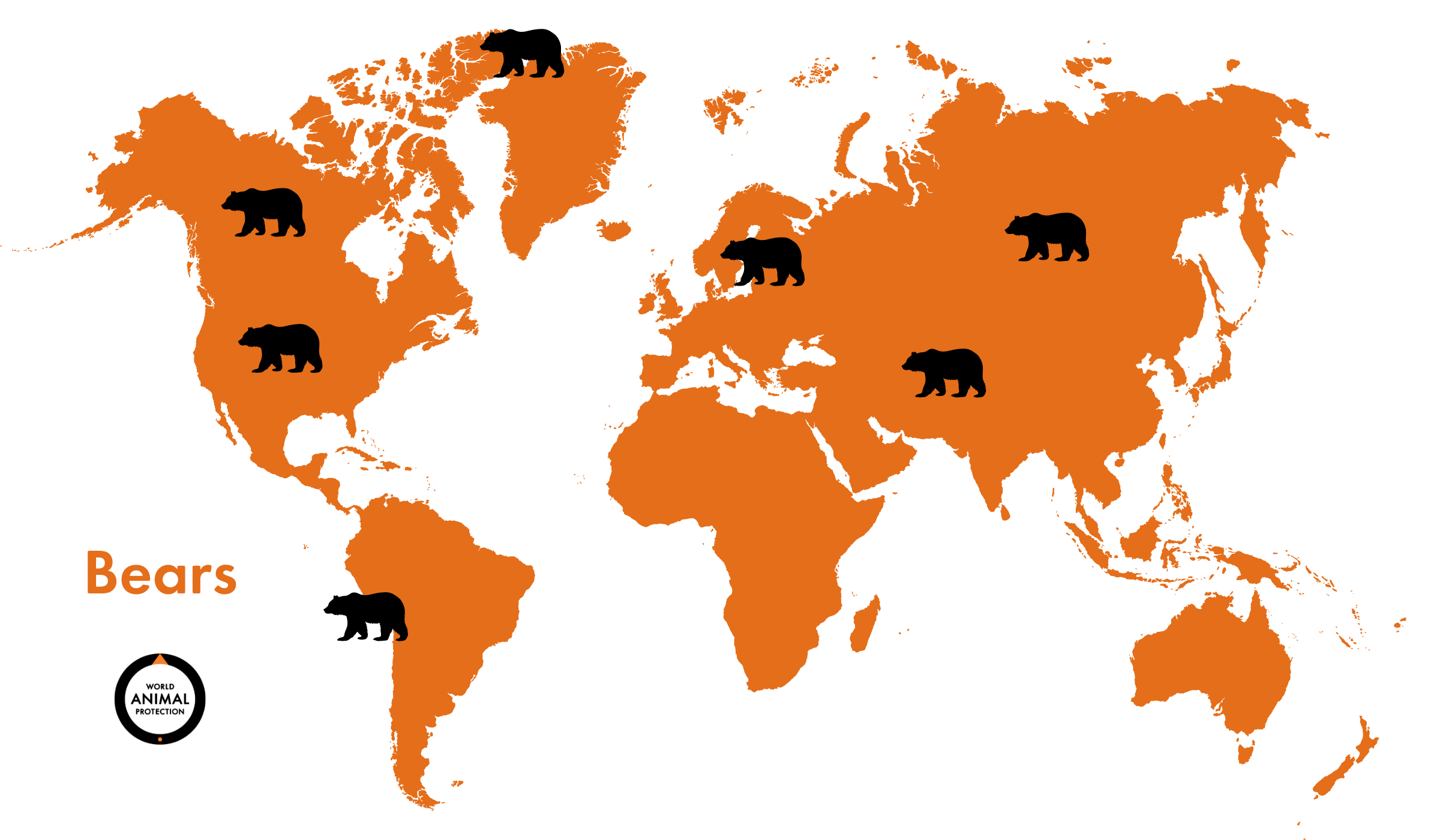
Bear Facts
What are bears like?
Bears are fascinating and powerful animals that come in different sizes and colors, like the black bear and the giant panda. Bears are among the most intelligent land animals in North America. They have the largest and most complex brains compared to other land mammals their size, and they rely on their brains for a number of behaviors.
Bears are great at climbing trees and love to explore their surroundings. They eat all sorts of things, from yummy berries and honey to fish and insects. During the winter, many bears hibernate, which means they sleep in a cozy den for several months to stay warm. Even though bears look big and tough, they are very sensitive and need lots of space to stay healthy and happy.

Where do bears live?
Bears can be found all over the world, with only the polar bear occupying the Arctic, and only the Andean bear in South America in the Andes mountains. Bears are not native to oceanic islands or Australia. The map shows where bears naturally live.

What problems do bears face?
Unfortunately, many bears are kept by humans in unnatural environments, like in zoos and circuses where they are sometimes forced to perform tricks and “dance” for entertainment. In captivity, bears live in spaces much smaller than their homes in the wild, are often kept isolated from their family members, and are not allowed to participate in the natural behaviors that keep them safe and happy. In some places, bears are farmed to use their body parts. Habitats for wild bears, especially polar bears, are threatened by climate change.
How can you help give bears a better life?
You can skip visiting zoos or circuses that keep bears in captivity, never take a photo touching or standing close to a captive bear, and, with your parent or guardian, learn how to be a wildlife-friendly traveler.

